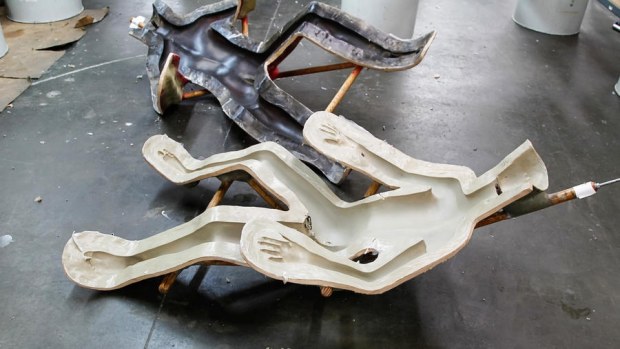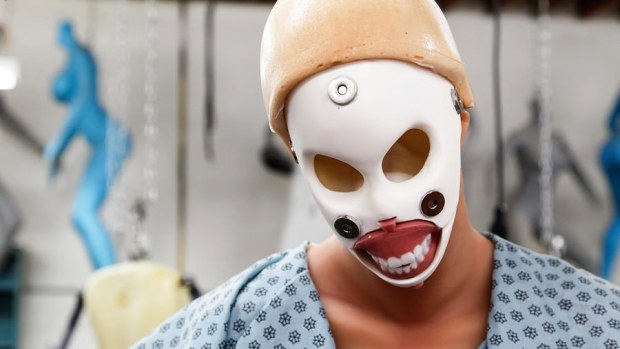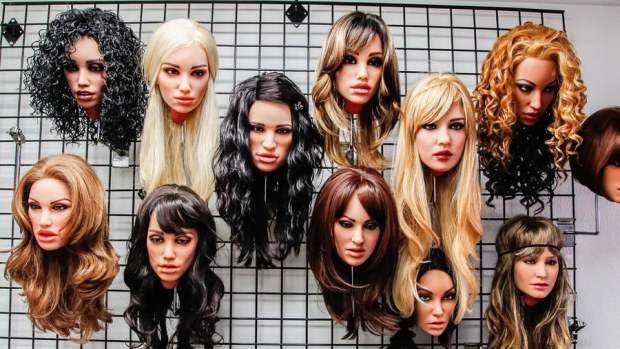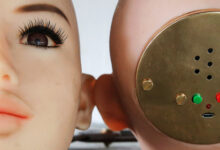Sexbots are getting smarter but claims they provide health benefits are spurious

Sexbots are becoming increasingly lifelike. The more expensive models powered by sophisticated AI, have a heartbeat, their eyes track, they sigh, they respond, they climax and learn on the job so they can adapt to their owner’s mood.
Customers can select their texture, eye and hair colour, the shape of their breasts and nipples, the form of their intimate parts, their voice and their script. They can have them recite poetry or declare love.
These sexbots are predominantly female, although extra parts can be added to meet client preferences and at least one company is making male bots, too.
No evidence
Now two London-based experts in sexual health have researched the health claims and say there is absolutely no evidence to support them.
“We would advise the general public to take the health claims with ‘a large pinch of salt’,” Dr Chantel Cox-George. Supplied
Their editorial in the British Medical Journal Sexual & Reproductive Health, say the claims are misleading and designed to boost $39 billion global sex technology industry.
“We would advise the general public to take the health claims with ‘a large pinch of salt’,” lead author, Dr Chantal Cox-George, told The Australian Financial Review.
She and her co-author, Professor Susan Bewley, decided to research the world literature after becoming aware forensic doctors were being asked for professional opinions on sex dolls and robots.
They wanted to answer some of the questions clinicians will inevitably be faced with in the future.

When mechanical reciprocation replaces the real thing, emotional distress may increase. Eduardo Contreras / San Diego Union-Tribune
But in their research, Dr Cox-George, an academic doctor at St George’s University Hospitals NHS Foundation Trust and Professor Bewley, from the Women’s Health Academic Centre, King’s College London, did not find a single study on the health benefits of sexbots.
Not wanting doctors to be falsely persuaded to change their current clinical practice, they used their editorial to summarise the arguments for and against the sex robot industry and assess the potential health implications.
Safer Sex
Do sex robots promote safer sex? That these dolls might have the potential to eliminate sex trafficking, tourism, and prostitution was fanciful.
They wrote of one hypothetical future red-light district where the spread of sexually transmitted infections is prevented by providing robotic prostitutes made of bacteria-resistant fibre and flushed for human fluids after use.

The mould for sex dolls, legs always apart. Eduardo Contreras / San Diego Union-Tribune
The authors say sexbots can already be bought or leased for parties and that there may be legal liability ramifications should their engineering fail, leading to injury.
They point to the risk of infection with unclear responsibility for condoms and cleaning protocols (some manufacturers recommend removable parts be put through the dishwasher).
Greater tolerance of sexbots, they say, relies on society having an agreed view of a laissez-faire governmental approach, rather than one regulating financial exchanges related to sexual activity.
Therapeutic value
But can sexbots be used therapeutically? They believe this is plausible for patients who would benefit from sexual practice without pressure although it might move some of them further away from the human intimacy they seek.

Professor Susan Bewley. co-author of the editorial. Supplied
Although it has been suggested sexbots might provide “companionship” for the lonely, mentally and physically disabled, the elderly, or those who find intercourse traumatic, this justification requires a change in meaning of “companion” from a living, interacting person.
Further, they assert it is patronising to argue for a “lesser” sexual experience when most people with disabilities can form mutually satisfying relationships.
While it is unproven if intimacy “needs” will be satisfied by robots, there is the possibility that they could worsen emotional distress. This could occur when mimicked reciprocation replaces the real thing, deepening the unsatisfied need for intimacy.
Managing paedophiles
But when it comes to paedophilia, can robots take the pain in place of children? Can they be used to “treat” paedophilia or prevent sexual violence by providing an acceptable outlet for these urges?
The authors argue they might instead help to normalise sexual deviancy or act as a practice ground for violence, including rape.
While many sexbot users may distinguish between fact and fantasy, some buyers may not, leading to concern about potentially exacerbating the risk of sexual assault and rape of actual children and adults.
One company (with a decade’s experience producing life-like child sex dolls) claims they help individuals “redirect dark desires”, thus protecting potential victims.
The company’s chief executive officer, a man with self-confessed paedophilic impulses, believes that aberrant sexual desires cannot be remedied but instead should be expressed legally and ethically, otherwise life would not be “worth living”.

The reality behind the fantasy – a sex bot’s skull. Eduardo Contreras / San Diego Union-Tribune
With major weaknesses in the evidence base, and the lack of evidence of effective treatments of sexual offenders against children, the authors “strongly caution against the use of paedobots as putative treatment unless as part of robust, scientifically and ethically acceptable research trials”.
Societal norms
In questioning whether societal norms will change, the authors raise the question of whether a sexbot can be raped.
The Foundation for Responsible Robotics states that the sex between human and robot is intrinsically different to sex between humans because “machinery … cannot grant consent or be raped”.
But the authors argue the user’s motivation can’t be entirely discounted and they worry about men selecting sexbot “personalities” that encourage non-consensual sex which provides permission for enacted violence.
While there is some early research into “robotiquette”, the etiquette of managing human robot interactions, there is no available medical guidance on the use of sexbots.
And as these robots become more plentiful, important issues will arise.
When double amputee, James Young, travelled across the world to meet the makers and users of sex robots and understand the implications for our future, his disbelief was as palpable as his tears in the documentary he made for the BBC.
Cost
But even if sexbots had therapeutic value, their high cost would limit accessibility for the moment. Currently a top-of-the-range model costs about $20,000. At the low end, one can be obtained for $6500.

Customers can select a face they fancy. Eduardo Contreras / San Diego Union-Tribune
Like all technology, however, they are likely to become more affordable and more sophisticated, and so fuel demand.
It is also not impossible that people will be able to 3D print their own sexbot in the future.
As they take a bigger role in society, they could present a challenge to many relationships.
The question of whether intercourse with a sexbot constitutes infidelity has already been the subject of a popular survey in the US.
One commentator remarked it is up to the couple as to where they set the boundaries.
The British authors believe the lack of evidence for health benefits is hardly likely to dampen market forces.
They say the “health” arguments are specious and the use of sexbots in the clinic should be rejected until their postulated benefits of “harm limitation” and “therapy” have been tested empirically.

Does sex with an assembly of plastic, metal, wiring and false eyes and hair constitute infidelity? Eduardo Contreras / San Diego Union-Tribune
You can read the full article from the source HERE.
-
Sale!

Aurora: Tender Sex Doll
Original price was: $2,799.00.$2,599.00Current price is: $2,599.00. Buy Now -
Sale!

Dominique: Thick Sex Doll
Original price was: $2,499.00.$2,199.00Current price is: $2,199.00. Buy Now -
Sale!

Auburn: Red Head Sex Doll
Original price was: $2,199.00.$1,899.00Current price is: $1,899.00. Buy Now






